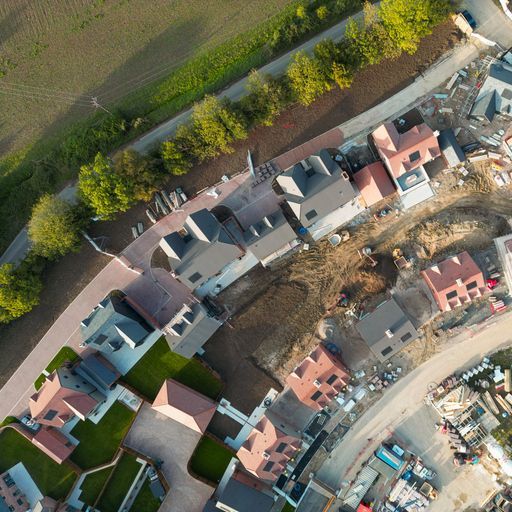As sustainability becomes an integral part of development projects, understanding Biodiversity Net Gain (BNG) is crucial. We recently hosted a webinar with two industry experts, Aaron Grainger, Associate Director – Nature and Biodiversity at Buro Happold and Andy West, Head of Land and Planning at Verto Homes, to provide developers with a comprehensive guide to the new BNG planning requirements that came into effect earlier this year. Here are the key takeaways from the discussion, moderated by Matt Bullivant, Director of Sustainability and ESG Strategy here at OakNorth.
First up, what is Biodiversity Net Gain (BNG)?
Biodiversity Net Gain (BNG) is a development approach that ensures wildlife habitats are left in a measurably improved state post-development. Recent planning requirement changes mean that BNG is now mandatory for developments in England, affecting larger site applications from February 12, 2024, and smaller sites from April 2, 2024.
Developers must achieve a BNG of at least 10%, meaning the development must result in more or higher quality habitat than what existed before. Biodiversity value is quantified using standardised biodiversity units, which account for a habitat’s type, size, condition, and location within a spatial network. These units can be lost or degraded as a result of development activities or gained through creating and enhancing habitats.
Ways developers can achieve a BNG of at least 10%
Developers have three options to achieve BNG:
1. On-site: Create or enhance biodiversity within the development site’s boundary.
2. Off-site: If a 10% gain for on-site BNG isn’t feasible, developers can combine on-site efforts with off-site biodiversity gains. Off-site gains can be made on land within the developer’s control, but outside the development site or by purchasing biodiversity units via the Local Planning Authority or a third-party habitat bank.
3. Statutory biodiversity credits: As a last resort, developers can buy biodiversity credits from the government, which will use the funds for habitat creation in England. These are expensive and two credits must be purchased for every one that requires compensation.
On-site vs. off-site
Deciding to go with on-site vs. off-site biodiversity solutions is not black and white and should be reviewed on a case-by-case basis, explained Aaron.
The BNG hierarchy should be followed which requires developers to initially focus on avoiding impacts on habitats, mitigating unavoidable impacts, enhancing existing habitats, and creating new habitats within the development site. If these steps aren’t sufficient to achieving at least 10% whilst also maintaining the viability of the scheme, off-site strategies become necessary. The crucial step here is that developers need to explain how the BNG hierarchy has been followed when reaching a final strategy for the delivery of 10% net gain.
Whilst the hierarchy prioritises on-site gains, in some instances, off-site solutions can be ecologically superior, especially when on-site habitats face recreational pressures and other disturbances. Additionally, your development site might not be in an optimum location, while an off-site solution is likely to be in an area that’s designed with a wider habitat network in mind and will also benefit other species. Aaron also pointed out that the feasibility of off-site solutions will vary by region, depending on the availability of third-party habitat banks and local authority schemes. The national credit system, while an option, is costly and often less appealing for smaller developers.
Real-world implementation and experiences
A quick pulse check of the audience – which was made up of mainly property developers and investors – revealed that 47% plan to comply with BNG requirements by enhancing or restoring biodiversity on their own developments. In comparison, 22% of participants plan to purchase off-site biodiversity credits via third-party providers.
Speaking from a developer’s point of view, Andy shared Verto Homes’ experiences, ranging from a proposal for a zero-carbon student village in Cornwall to achieve nearly 40% net gain to a challenging development in Devon that will require off-site credits due to potential dormouse habitats.
A key takeaway from both Aaron and Andy was that early engagement with ecologists and landscape architects is incredibly important.
Looking ahead
As BNG becomes more embedded in planning processes, both Aaron and Andy anticipate improvements in consistency and execution. While the legislation’s intent is clear, they expect to see some initial teething issues when it comes to the interpretation and application by Local Planning Authorities (LPAs) and ecologists.
Ultimately, BNG aims to integrate biodiversity considerations into the heart of development planning, ensuring that new projects contribute positively to the environment. A proactive approach will help developers navigate the complexities of BNG, making sustainability a cornerstone of their projects.
Thank you again to Aaron and Andy for joining the session and sharing your expert insights and experiences.
If you’d like to watch the full webinar, you’ll find the recording here. Or, if you’re interested in learning more, reach out to our team of experts.


